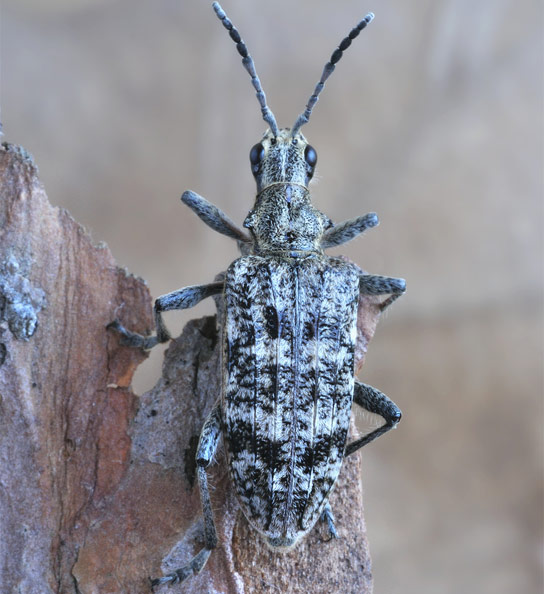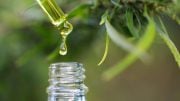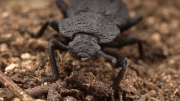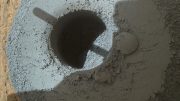
Rhagium inquisitor. Credit: Yale University
A newly published study from Yale University looks at longhorn beetle Rhagium inquisitor and its ability to supercool to below -25°C, examining the unusual structure of its antifreeze protein.
In 2011, Yale undergraduates asked a question: How does a Siberian beetle survive some of the cruelest winters on Earth? Their answer appears on the cover of the April 26 issue of the Journal Biological Chemistry in the form of a peculiarly shaped protein with an ability to prevent ice from forming.
The potent antifreeze protein culled from the beetle Rhagium inquisitor has the potential to make ice cream smooth and creamy or help preserve transplant organs long enough to save lives.
“We were fortunate to find just the right protein to work with and to have mentors here at Yale willing to donate time and resources to discover its structure,” said senior Aaron Hakim, co-lead author of the study, who will graduate this spring with degrees in economics and a combined B.S./M.S. in molecular, cellular, and developmental biology (MCDB).
The publication of the paper began as an undergraduate research project for the International Genetically Engineered Machines (iGEM) Competition. The contest features teams from universities around the world pursuing novel projects in the field of synthetic biology research.
“The unique thing about what they have done is that they took an idea and continued to pursue it through completion of the research and publication,” said Farren Issacs, professor in Yale’s MCDB department and adviser to the Yale iGEM Team.
The undergraduates were intrigued by antifreeze proteins, which have evolved in different forms in plants, bacteria, fish, and insects living in cold climates. These natural proteins are used in ice cream to improve consistency and have potential applications in the preservation of organ tissue or embryos stored at fertility clinics. In the spring of 2011, Hakim read a recently published Danish study about the antifreeze protein from the Rhagium inquisitor beetle, which was the most active antifreeze protein discovered to date — hundreds of times more potent than salt in inhibiting the formation of ice.
Antifreeze proteins are known to bind to the surface of small ice crystals and prevent their growth. However, the precise mechanism by which antifreeze proteins bind to ice has been debated for over 30 years.
With the help of Jennifer B. Nguyen, a graduate student in the lab of Yorgo Modis and co-lead author on the paper, Hakim and his team cloned the gene that encodes for the antifreeze protein in the beetle and expressed it in the bacterium Escherichia coli. They purified large quantities of the protein and investigated its structure using X-ray crystallography. Using novel and sophisticated direct-methods techniques, Wuyi Meng, senior author on the paper and a research support specialist at Yale in the Chemical and Biophysical Instrumentation Center, helped the team discover the protein’s unusual structure.
The protein possesses an extremely flat surface, an unusual structure that assists it in binding to ice and inhibiting its formation.
Hakim is not done yet. He is working with Issacs to tweak the structure of the protein to see if they can make it even more efficient.
Reference: “Crystal Structure of an Insect Antifreeze Protein and its Implications for Ice Binding” by Aaron Hakim, Jennifer B. Nguyen, Koli Basu, Darren F. Zhu, Durga Thakral, Peter L. Davies, Farren J. Isaacs, Yorgo Modis and Wuyi Meng, April 2013, Journal Biological Chemistry.
DOI: 10.1074/jbc.M113.450973
Other Yale authors of the paper include Darren F. Zhu, and Durga Thakral. Koli Basu. Peter L. Davies from Queen’s University in Canada are also authors on the paper.









Be the first to comment on "A Closer Look at the Antifreeze Protein That Allows Siberian Beetles to Survive"